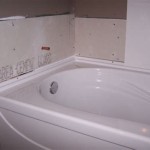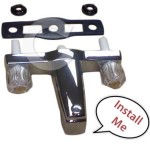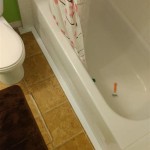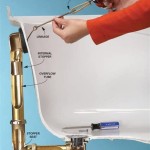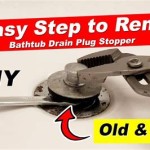What to Use to Clean a Bathtub Drain
A clogged bathtub drain is a common household nuisance that can range from a minor inconvenience to a significant plumbing problem. The accumulation of hair, soap scum, and other debris restricts water flow, leading to slow drainage or complete blockage. Understanding the various methods and materials available for cleaning a bathtub drain empowers individuals to address these issues effectively and prevent future occurrences. This article explores several approaches to cleaning a bathtub drain, detailing the tools, techniques, and preventative measures involved.
Identifying the Cause of the Clog
Before attempting any cleaning method, it's crucial to understand the likely cause of the clog. The most frequent culprit in bathtub drains is hair. Hair strands bind together with soap residue and other particulate matter, forming a dense mass that obstructs the drainpipe. Other common contributors include soap scum buildup, mineral deposits, and small objects that may have accidentally fallen into the drain. Identifying the potential cause helps determine the most effective cleaning strategy. For instance, a clog primarily composed of hair might respond well to mechanical removal, while a heavy soap scum buildup may require chemical dissolution or a combination of techniques.
Visual inspection is the first step in identifying the problem. Removing the drain stopper or strainer allows for a direct view down the drainpipe. A flashlight can be used to illuminate the area and reveal the nature and extent of the blockage. If a visible mass of hair or debris is present, it can be manually removed using tools such as tweezers or a bent wire hanger. If the clog is not immediately visible or seems to extend further down the drainpipe, alternative methods are necessary.
The speed of drainage provides additional clues. A slow-draining bathtub suggests a partial blockage, while a completely blocked drain indicates a more severe obstruction. The odor emanating from the drain can also be indicative. A foul smell often accompanies the decomposition of organic matter trapped within the drainpipe, suggesting the presence of hair, soap scum, or food particles if the bathtub is located near a kitchen area. This information guides the selection of appropriate cleaning agents and techniques.
Mechanical Methods for Cleaning Bathtub Drains
Mechanical methods involve physically removing the clog from the drainpipe. These methods are often preferred as a first approach due to their non-toxic nature and effectiveness in removing hair and solid debris. Several tools are available for mechanical drain cleaning, including drain snakes, plungers, and specialized clog removal tools.
A plunger is a common household tool that can be effective for dislodging minor clogs. It works by creating pressure and suction to loosen and break up the obstruction. To use a plunger effectively, ensure there is enough water in the bathtub to cover the cup of the plunger. Position the plunger over the drain opening, creating a tight seal. Push and pull the plunger vigorously for several minutes, maintaining the seal. If the water begins to drain, continue plunging to ensure the clog is completely cleared. If the water doesn't drain, add more water and repeat the process.
A drain snake, also known as a plumbing snake or auger, is a flexible tool designed to reach further down the drainpipe and break up or retrieve clogs. It typically consists of a long, flexible metal cable with a corkscrew or auger tip. To use a drain snake, carefully insert the tip into the drain opening and feed the cable down the drainpipe. Rotate the handle to advance the cable through the pipe, navigating bends and obstructions. When the snake encounters resistance, indicating a clog, continue rotating the handle to break up or grab the obstruction. Once the clog is loosened or retrieved, carefully pull the snake back out of the drainpipe, removing any debris attached to the tip.
Specialized clog removal tools, such as plastic drain snakes with barbed edges, are also available. These tools are designed to snag and remove hair and other debris from the drainpipe. They are typically inserted into the drain opening and then pulled back out, collecting hair and debris along the way. These tools are particularly effective for removing hair clogs that are located near the drain opening. Care should be taken when using these tools to avoid pushing the clog further down the drainpipe or damaging the drainpipe itself.
Following the mechanical removal of a clog, it's advisable to flush the drainpipe with hot water to remove any remaining debris. Running hot water down the drain for several minutes helps to clear the pipe and prevent future clogs. In cases where the clog is particularly stubborn, a combination of mechanical methods may be necessary to achieve effective results.
Chemical and Natural Solutions for Bathtub Drain Cleaning
When mechanical methods are insufficient, chemical or natural solutions can be used to dissolve or break down the clog. Chemical drain cleaners contain strong chemicals that can dissolve organic matter and other debris, while natural solutions utilize milder ingredients such as baking soda and vinegar. It's important to exercise caution when using chemical drain cleaners, as they can be corrosive and harmful to both the environment and the plumbing system.
Chemical drain cleaners are available in liquid, gel, and crystal forms. These products typically contain strong chemicals such as sodium hydroxide or sulfuric acid, which can dissolve hair, soap scum, and other organic matter. To use a chemical drain cleaner, follow the manufacturer's instructions carefully. Pour the recommended amount of cleaner into the drain opening and allow it to sit for the specified amount of time. After the waiting period, flush the drain with hot water to remove the dissolved debris. It is crucial to wear gloves and eye protection when handling chemical drain cleaners, as they can cause skin and eye irritation. Additionally, it's important to avoid mixing different types of drain cleaners, as this can create dangerous fumes or reactions. Due to their corrosive nature, chemical drain cleaners should be used sparingly and only when other methods have failed.
Natural solutions offer a safer and more environmentally friendly alternative to chemical drain cleaners. One popular natural solution involves using baking soda and vinegar. Pour one cup of baking soda down the drain, followed by one cup of white vinegar. The mixture will fizz and bubble as the baking soda and vinegar react. Allow the mixture to sit in the drain for 30 minutes to an hour. After the waiting period, flush the drain with hot water. The baking soda and vinegar help to loosen and dissolve soap scum and other debris, making it easier to flush them away. This method can be repeated several times if necessary.
Another natural solution involves using boiling water. Pouring boiling water down the drain can help to dissolve soap scum and loosen other debris. This method is particularly effective for clogs that are primarily composed of soap scum. However, it's important to exercise caution when using boiling water, as it can damage certain types of plumbing pipes, such as PVC pipes. Before using boiling water, check the type of pipes in the plumbing system to ensure they can withstand the heat. Furthermore, if the bathtub is made of porcelain avoid pouring boiling water directly onto the surface, as it may crack.
Enzymatic drain cleaners are another type of natural solution that utilizes enzymes to break down organic matter. These cleaners contain enzymes that digest hair, soap scum, and other organic debris, effectively clearing the drainpipe. Enzymatic drain cleaners are generally safe for all types of plumbing pipes and are environmentally friendly. To use an enzymatic drain cleaner, follow the manufacturer's instructions carefully. Pour the recommended amount of cleaner down the drain and allow it to sit for the specified amount of time. After the waiting period, flush the drain with water.
Preventative Measures to Avoid Clogged Bathtub Drains
Preventing clogs is often easier and more cost-effective than clearing them. Implementing preventative measures can significantly reduce the frequency of clogged bathtub drains and maintain a healthy plumbing system. These measures include using drain screens, regular cleaning, and avoiding the disposal of inappropriate materials down the drain.
Drain screens or strainers are simple devices that fit over the drain opening and catch hair, soap scum, and other debris before they enter the drainpipe. These screens are inexpensive and easy to install. Periodically removing and cleaning the drain screen prevents the accumulation of debris and ensures proper water flow. Different types of drain screens are available, including mesh screens, silicone screens, and pop-up screens. Choose a screen that fits securely over the drain opening and effectively catches debris. Regular cleaning of the drain screen is essential to maintain its effectiveness.
Regular cleaning of the bathtub drain helps to prevent the buildup of soap scum and other debris. This can be done by periodically flushing the drain with hot water or using a natural cleaning solution such as baking soda and vinegar. Pouring boiling water down the drain once a month can help to dissolve soap scum and prevent clogs. Alternatively, using a baking soda and vinegar mixture can help to loosen and remove debris. Regular cleaning helps to keep the drainpipe clear and prevents the accumulation of clogs over time.
Avoiding the disposal of inappropriate materials down the drain is crucial for preventing clogs. Hair, grease, and food particles should never be flushed down the drain. These materials can accumulate in the drainpipe and cause significant blockages. Instead, dispose of these materials in the trash. Properly disposing of waste materials prevents them from entering the plumbing system and causing clogs. Educating all household members about proper waste disposal practices is essential for maintaining a healthy plumbing system.
The type of soap used can also contribute to the buildup of soap scum in the bathtub drain. Bar soaps often contain talc and other ingredients that can combine with hard water to form a sticky residue that clings to the drainpipe. Switching to liquid soap or using soap with fewer additives can help to reduce the buildup of soap scum. Regularly cleaning the bathtub with a non-abrasive cleaner can also help to remove soap scum and prevent it from accumulating in the drainpipe. Choosing appropriate cleaning products and soap types can contribute to a cleaner and healthier plumbing system.
By understanding the causes of bathtub drain clogs, employing effective cleaning methods, and implementing preventative measures, individuals can maintain a clear and functional drainage system. Regular maintenance and proper waste disposal practices are key to preventing future clogs and ensuring long-term plumbing health.

4 Ways To Clean A Bathtub Drain Wikihow

4 Ways To Clean A Bathtub Drain Wikihow

4 Ways To Clean A Bathtub Drain Wikihow

How To Unclog A Bathtub Drain Without Chemicals

How To Unclog A Bathtub Drain Without Chemicals Family Handyman

How To Unclog Bathtub Drain Pipes Save 200 In Two Minutes

5 Easy Ways To Unclog Bathtub Drain

How To Unclog A Bathtub Drain Without Chemicals

How To Unclog A Bathtub Drain 11 Diy Clog Busters

How To Unclog A Bathtub Drain Without Chemicals Family Handyman

